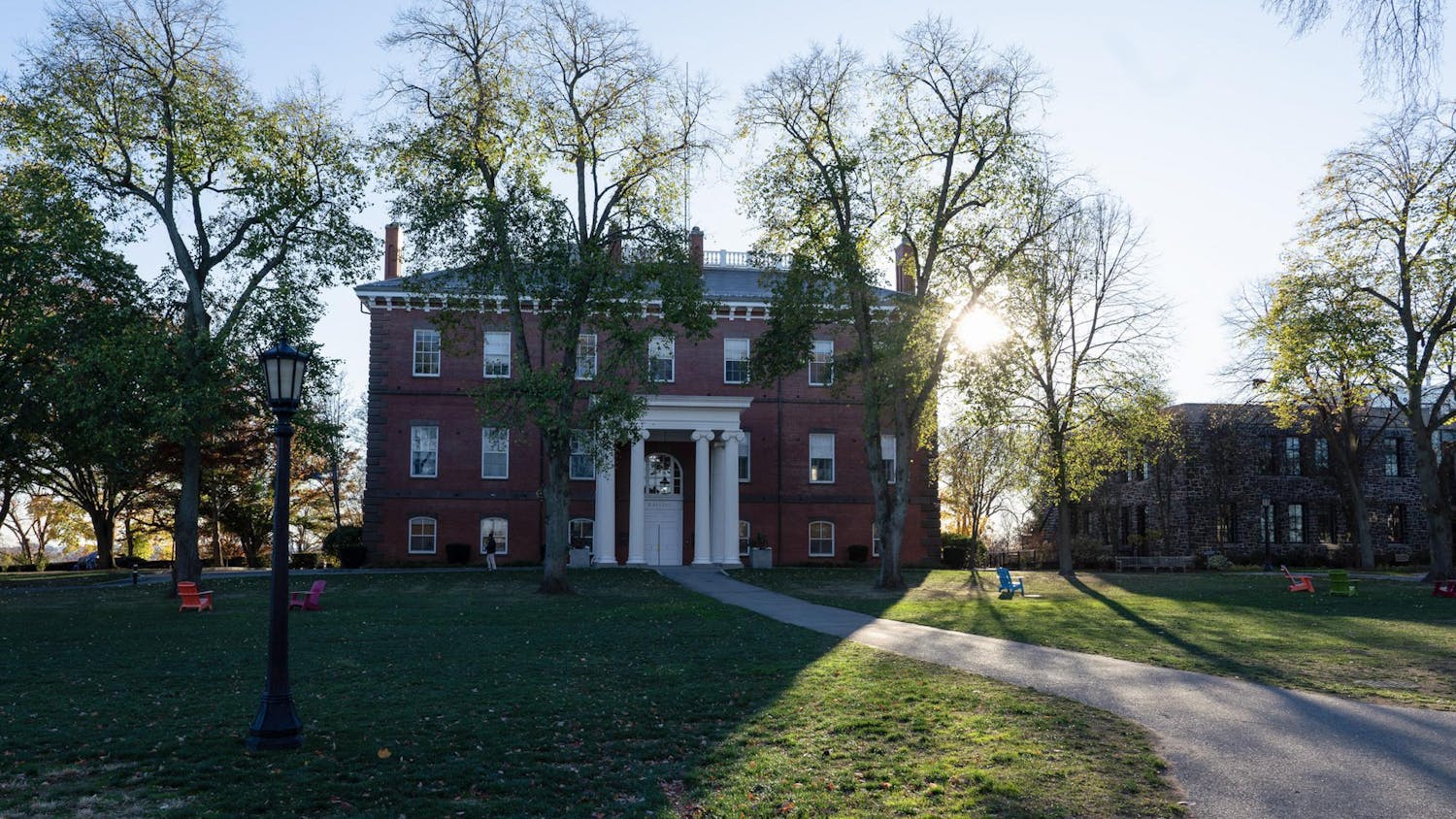In the period leading up to graduation, many Tufts seniors think about applying to programs like Teach for America or the Peace Corps.
Last year, three recent grads chose to pursue a similar option right across the river in Boston.
Caitlin Kearney, Gabrielle Sloss and Adam Evans (all LA '11) are this year in the middle of a year as student teachers with MATCH Corps. The program recruits a group of up to 100 recent grads to work for Boston's MATCH charter school system.
MATCH Corps members receive housing and a living stipend in addition to two weeks of training in August before the school year begins. They then spend the year typically working 60−hour weeks tutoring students at the MATCH schools.
MATCH provides a rigorous curriculum aimed at helping inner−city Boston students from low−income families achieve success. The organization consists of a middle school in Boston's Jamaica Plain neighborhood and a high school in Brighton.
Each corps member is assigned six or seven students with whom they work intensively over the course of the school year. They meet in small groups and on a one−on−one basis, providing subject specific tutoring in math and English as well as general homework and study assistance. In addition, the members work as teachers or administrative aides and provide a link with students' parents through weekly phone calls.
Kearney, Sloss and Evans each said that they chose the MATCH program in part because of the opportunity to work one on one with students, as opposed to in a larger group setting such as with Teach for America.
"In MATCH Corps, you can work with students one−on−one or one−on−two. I thought that by being able to work with the same students every day, I could form strong relationships with them and cater to their needs," Sloss said.
Kearney added that she felt MATCH Corps, and particularly the MATCH Teacher Residency Program (MTR) in which she also takes part would better prepare her to become a successful teacher than would a program like Teach for America.
"The whole idea behind MTR is to train unbelievable rookie teachers. With Teach for America, you're only given a summer of training, and often that first year doesn't go very well. One of MTR's goals is to have those first years be successful so that you don't become burned out and you can stay longer," Kearney said.
MTR is a yearlong training program that runs concurrently with a member's typical duties within the MATCH Corps. Members of this intensive subset of MATCH co−teach in the MATCH school and take specialized teaching classes. At the end of the year, MTR can help place teachers in urban public schools around the country.
All three Jumbos said that their time at Tufts influenced their decision to join MATCH Corps.
Kearney participated in the Peer Health Exchange program at Tufts, and said that her experience teaching in high schools was a steppingstone in applying to MATCH Corps.
Sloss explained that majoring in American studies at Tufts helped her decide to go into teaching.
"I think that my American studies major changed the trajectory of my life. It gave me a perspective on education as a social justice issue, and I take that perspective with me at school," Sloss said.
For Evans, the passion of his professors at Tufts provided a model for teaching that he can use in his work with MATCH.
This passion, commitment and awareness of the societal context for schooling are essential in charter schools like the ones MATCH runs. The system, because of the specific demographic it caters to, adopts a certain philosophy, according to the tutors.
"[MATCH is a] no−excuses school," Kearney said. "We don't make excuses for our kids based on the neighborhood that they are from. Our philosophy is that every student, no matter where they are from, can learn. This requires longer days and stricter behavior," Kearney said.
The MATCH schools do not offer arts or music during the school day and have limited sports and extracurricular offerings, according to Kearney.
"Since the students come with greater urgency based on our demographic, we spend more time focusing on academics and less on athletics," he said. "The idea is that many of [the] students come in as sixth−graders with a second or third grade reading level, so we need to focus [on academics] so much that we don't have time for other things."
Despite the intense experience that the three will have as educators this year, not all of them plan to continue teaching afterwards.
Kearney hopes to be placed in a school through the MATCH program, but Sloss said she hopes to work as a school psychologist or with cognitive behavioral therapy for teens. Evans hopes to go even further afield, working as either a doctor or a lawyer.
Evans said that the MATCH schools strive to create a strong culture of achievement for their students.
"One of the interesting things about MATCH is the idea of the culture of this school, which means that the school has high behavioral expectations and academic expectations," he said. "The students are consistently challenged with material that requires them to meet or exceed their potential. The level of trust that the school places in students inspires students to meet these expectations."





